
Extractive summaries and key takeaways from the articles carefully curated from TOP TEN BUSINESS MAGAZINES to promote informed business decision-making | Since 2017 | Week 394 | March 28- April 3, 2025 | Archive
Listen to this week’s ediation in audio
Shaping Section
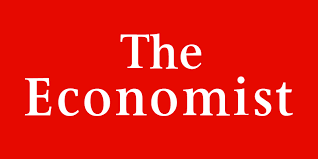
Is Elon Musk remaking government or breaking it?
The Economist | March 27, 2025
Extractive Summary of the Article | Listen
3 key takeaways from the article
- Of all the things President Donald Trump has done at home since his inauguration in January, putting DOGE (the Department of Government Efficiency) under Mr Musk has turned out to be the most polarising.
- If he could reform the federal government—an organisation whose annual expenditure of $7trn is roughly equivalent to the revenues of America’s 20 biggest companies—that would be a boon for humanity. So far, however, DOGE has stirred up animosity, as it has barged into one agency after another. It has broken laws with glee and callously destroyed careers. It has made false claims about waste and seized personal data protected by law. Worst is that DOGE’s actions so far look as if they are designed not to make government work better, but to expand the president’s power and root out wrongthink.
- Even this does not mean DOGE has failed—yet. There are three possible outcomes. First, that just as rivals laughed at Tesla and SpaceX in their early days, DOGE will come good in time. Second, that Mr Musk will break the government. The third, likeliest scenario is that DOGE becomes snarled up in court; many good civil servants are fired or quit; fewer talented people see government as an appealing career; and America is left with a stronger president and a weaker Congress.
(Copyright lies with the publisher)
Topics: Innovation, Reforms. DOGE, State-owned Enterprises, Bureaucracy, Efficiency. USA, Elon Musk, Donald Trump
Click for the extractive summary of the article.Of all the things President Donald Trump has done at home since his inauguration in January, putting DOGE (the Department of Government Efficiency) under Mr Musk has turned out to be the most polarising. The world’s richest man is exalted by some as an altruistic genius and hated by others as a self-dealing villain. Is he remaking the government, or breaking it?
The Economist looked forward to what Mr Musk might do with some hope. He has transformed at least two industries. If he could reform the federal government—an organisation whose annual expenditure of $7trn is roughly equivalent to the revenues of America’s 20 biggest companies—that would be a boon for humanity. Across the West voters are frustrated because their governments are more adept at slowing things down than at making them go. Yet large democracies have for decades struggled to come up with a convincing fix.
So far, however, DOGE has stirred up animosity, as it has barged into one agency after another. It has broken laws with glee and callously destroyed careers. It has made false claims about waste and seized personal data protected by law.
A sympathetic reading of DOGE is that Mr Musk is trying to bring creative destruction to bureaucracies by other means. His preferred method at Twitter (now X) was to break things and see what happened. Perhaps what America has seen so far is the destruction and the creation will come afterwards. Others retort that the government is not like the companies Mr Musk has transformed. Unfortunately, examples of DOGE making government less effective are much more numerous.
DOGE’s scope to save money is smaller than advertised. It is targeting discretionary spending (the part of the budget not on autopilot) and defence is excluded, for now. That means Mr Musk’s attack surface is just 15% of the budget. Because much of the rest of government spending is redistribution, there are no huge efficiencies to be had there. If he were cutting administrative costs wisely, that would be welcome. But too many of DOGE’s planned cuts have turned out to be misprints, like the $8bn contract it cancelled that was actually worth only $8m. Nor has it identified lots of burdensome regulation to cut, as was the hope of Vivek Ramaswamy, briefly DOGE’s co-head. Worst is that DOGE’s actions so far look as if they are designed not to make government work better, but to expand the president’s power and root out wrongthink.
Even this does not mean DOGE has failed—yet. There are three possible outcomes. First, that just as rivals laughed at Tesla and SpaceX in their early days, DOGE will come good in time. Second, that Mr Musk will break the government. The third, likeliest scenario is that DOGE becomes snarled up in court; many good civil servants are fired or quit; fewer talented people see government as an appealing career; and America is left with a stronger president and a weaker Congress. This would be a huge missed opportunity.
show less
Global Economics Intelligence executive summary, February 2025
By Sven Smit et al., | McKinsey & Company | March 21, 2025
Extractive Summary of the Article | Listen
3 key takeaways from the article
- Trade policy is notably uncertain, with both the monthly Global Economic Policy Uncertainty Index and the Trade Policy Uncertainty Index spiking. This economic environment finds central bank policies divided into two camps, with many playing a waiting game to see how inflation develops. India and the UK did cut interest rates this month.
- The recovery among developed markets continues, while emerging markets face some challenges. Across economies, consumer confidence has dipped as inflation expectations have risen. Chinese New Year holiday was robust, hinting at a change of mood among Chinese consumers. Inflation expectations continue to climb, reaching their highest level in almost two years.
- Globally, the manufacturing sector has stabilized somewhat after seven months of contraction. Services, meanwhile, are starting to show signs of softening. December unemployment rates remained stable across most surveyed economies, although India saw a 0.3-percentage-point rise. Despite increased economic volatility, asset volatility was unchanged in February, with government bond yields remaining stable. World trade volume increased by 1.1% in December 2024, driven by growth across imports and exports in advanced economies.
(Copyright of the article lies with the publisher)
Topics: Global Trade, Inflation, Consumer Confidence, Bonds
Click for the extractive summary of the articleTrade policy is notably uncertain, with both the monthly Global Economic Policy Uncertainty Index and the Trade Policy Uncertainty Index spiking. US consumers are of two minds: sentiment differs according to whether consumers are considering their own local economy or looking further afield, a phenomenon that can perhaps be characterized as the “I am OK, but you are not OK” economy. This economic environment finds central bank policies divided into two camps, with many playing a waiting game to see how inflation develops. India and the UK did cut interest rates this month.
The recovery among developed markets continues, while emerging markets face some challenges. The Conference Board’s February projections anticipate real GDP growth in the eurozone to be 0.8% in 2024, 0.9% in 2025, and 1.3% in 2026—revised down by –0.1 percentage points in 2025 and –0.1 percentage points in 2026 from a month ago. Across economies, consumer confidence has dipped as inflation expectations have risen. Inflation expectations continue to climb, reaching their highest level in almost two years.
Chinese New Year holiday was robust, hinting at a change of mood among Chinese consumers, with sales revenues in consumer-related industries climbing by 10.8% year on year. Notably, China’s New Year holiday box office receipts reached another record high as moviegoers spent $1.3 billion over the eight-day holiday period.
Indeed, inflationary pressures returned in January with most price metrics on the rise. Commodity prices grew in February, except for energy, which remained muted. However, higher tariffs on steel and aluminum, along with increased uncertainty, resulted in higher prices for industrial metals. In contrast, the FAO Food Price Index declined, primarily due to improved global supply conditions for sugar and vegetable oils, as well as lower meat prices driven by increased production and lower demand.
The price of gold—a traditional hedge in times of uncertainty—continued to surge on account of renewed inflation fears and the general geopolitical and economic environment, but Bitcoin declined in February on the back of security concerns and regulatory uncertainty, following initial optimism for the new US administration’s pro-cryptocurrency policy.
Globally, the manufacturing sector has stabilized somewhat after seven months of contraction, with sectors improving across the board, driven by production and new domestic orders. That said, companies continue to report weak external demand and reduced head count. Services, meanwhile, are starting to show signs of softening. Across developed economies, services sectors nevertheless continued to record expansion, albeit at a reduced pace. December unemployment rates remained stable across most surveyed economies, although India saw a 0.3-percentage-point rise.
Despite increased economic volatility, asset volatility was unchanged in February, with government bond yields remaining stable.
World trade volume increased by 1.1% in December 2024, driven by growth across imports and exports in advanced economies.
show less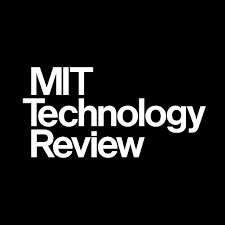
Inside a romance scam compound—and how people get tricked into being there
By Peter Guest and Emily Fishbein | MIT Technology Review | March 27, 2025
Extractive Summary of the Article | Listen
3 key takeaways from the article
- The article is about Gavesh’s (a pseudonym to protect his identity) journey had started, seemingly innocently, with a job ad on Facebook promising work he desperately needed. Instead, he found himself trafficked into a business commonly known as “pig butchering”—a form of fraud in which scammers form romantic or other close relationships with targets online and extract money from them.
- The true scale of this type of fraud is hard to estimate, but the United Nations reported in 2023 that hundreds of thousands of people had been trafficked to work as online scammers in Southeast Asia. One 2024 study, from the University of Texas, estimates that the criminal syndicates that run these businesses have stolen at least $75 billion since 2020.
- Global companies, including American social media and dating apps and international cryptocurrency and messaging platforms, have given the fraud business the means to become industrialized. By the same token, it is Big Tech that may hold the key to breaking up the scam syndicates—if only these companies can be persuaded or compelled to act. Global trends indicates otherwise.
(Copyright lies with the publisher)
Topics: Scamming, Pig-burchering, Technology, Crimes
Click for the extractive summary of the articleGavesh’s (a pseudonym to protect his identity) journey had started, seemingly innocently, with a job ad on Facebook promising work he desperately needed.
Instead, he found himself trafficked into a business commonly known as “pig butchering”—a form of fraud in which scammers form romantic or other close relationships with targets online and extract money from them. The Chinese crime syndicates behind the scams have netted billions of dollars, and they have used violence and coercion to force their workers, many of them people trafficked like Gavesh, to carry out the frauds from large compounds, several of which operate openly in the quasi-lawless borderlands of Myanmar.
When he saw the Facebook post in mid-2022, it seemed like a godsend. A company in Thailand was looking for English-speaking customer service and data entry specialists. The monthly salary was $1,500—far more than he could earn at home—with meals, travel costs, a visa, and accommodation included. “I knew if I got this job, my life would turn around. I would be able to give my family a good life,” Gavesh says. What came next was life-changing, but not in the way Gavesh had hoped. The advert was a fraud—and a classic tactic syndicates use to force workers like Gavesh into an economy that operates as something like a dark mirror of the global outsourcing industry.
The true scale of this type of fraud is hard to estimate, but the United Nations reported in 2023 that hundreds of thousands of people had been trafficked to work as online scammers in Southeast Asia. One 2024 study, from the University of Texas, estimates that the criminal syndicates that run these businesses have stolen at least $75 billion since 2020.
These schemes have been going on for more than two decades, but they’ve started to capture global attention only recently, as the syndicates running them increasingly shift from Chinese targets toward the West. And even as investigators, international organizations, and journalists gradually pull back the curtain on the brutal conditions inside scamming compounds and document their vast scale, what is far less exposed is the pivotal role platforms owned by Big Tech play throughout the industry—from initially coercing individuals to become scammers to, finally, duping scam targets out of their life savings.
As losses mount, governments and law enforcement agencies have looked for ways to disrupt the syndicates, which have become adept at using ungoverned spaces in lawless borderlands and partnering with corrupt regimes. But on the whole, the syndicates have managed to stay a step ahead of law enforcement—in part by relying on services from the world’s tech giants. Apple iPhones are their preferred scamming tools. Meta-owned Facebook and WhatsApp are used to recruit people into forced labor, as is Telegram. Social media and messaging platforms, including Facebook, Instagram, WhatsApp, WeChat, and X, provide spaces for scammers to find and lure targets. So do dating apps, including Tinder. Some of the scam compounds have their own Starlink terminals. And cryptocurrencies like tether and global crypto platforms like Binance have allowed the criminal operations to move money with little or no oversight.
That question is only becoming more urgent as many tech companies pull back on efforts to moderate their platforms, artificial intelligence supercharges scam operations, and the Trump administration signals broad support for deregulation of the tech sector while withdrawing support from organizations that study the scams and support the victims. All these trends may further embolden the syndicates. And even as the human costs keep building, global governments exert ineffectual pressure—if any at all—on the tech sector to turn its vast financial and technical resources against a criminal economy that has thrived in the spaces Silicon Valley built.
show lessStrategy & Business Model Section
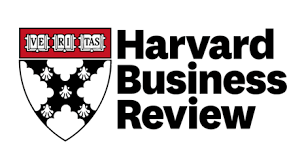
The Secrets of Extraordinary Low-Cost Operators
By Thomas Hout | Harvard Business Review Magazine | March–April 2025 Issue
Extractive Summary of the Article | Listen
3 key takeaways from the article
- When you think of companies that are longtime, low-cost leaders, what reasons for their outsize performance spring to mind? It stems from their leadership, organization, and culture; and the design and execution of their operating systems.
- With respect to leadership exemplar companies share some notable characteristics: respect for people, a commitment to decentralized decision-making, and a zeal for making change happen. Leaders of these companies share another distinguishing trait: They have ideas on how to run their business that were originally, and in many cases still are, well outside their industry’s norms. Their cost excellence rests on the deeply embedded properties of an organization, including rich knowledge of processes, obsessive attention to detail, a collection of reliable real-time operating data for decision-making, the in-house development of process specifications and the software that manages operations, continual short-cycle experimentation on every step of work, and rigorous hiring and training practices.
- Exemplars have different ways of achieving lower costs in operations, but all seem to share a few basic principles. Eliminate long-standing industry barriers to lower costs. Ensure that product design and process design reinforce each other. Develop original multipurpose technologies that connect the company to the customer and reduce cost. And use cycle time and variance as a management tool.
(Copyright lies with the publisher)
Topics: Low Cost Operators, Strategy, Business Model, Operations
Extractive Summary of the Article | Read | Listen
When you think of companies that are longtime, low-cost leaders, what reasons for their outsize performance spring to mind? Many people assume that their position stems mainly from advantages in efficiency or scale and maybe a fanatical devotion to penny-pinching measures. Few would say they are innovative, creative, or customer-centric. Yet that’s precisely what the low-cost exemplars are.
In fact, the lowest-cost companies are usually among the best places to work. They often pay more, and their employees tend to stay with them longer. They invest in people and technology (including AI) at higher rates than their counterparts do. Further, their customers tend to be loyal. That’s because achieving the lowest-cost position is mainly about people and creativity. It almost always stems from some powerful customer-centric ideas that are exceptionally well executed—and has little to do with familiar step-by-step management programs aimed at efficiency improvements and waste reduction. Being the lowest-cost competitor is a deep capability built over time.
A company that adopts a lower-cost business model may see a great payback, but that model can be copied by competitors over time. By contrast, a company with a culture centered on competing on costs (as well as quality and differentiation) will continually find more cost-effective ways to make customers happy. I’ve found that low-cost exemplars have three elements in common.
Unusual leaders. The founders and subsequent CEOs of exemplar companies share some notable characteristics: respect for people, a commitment to decentralized decision-making, and a zeal for making change happen. Leaders of these companies share another distinguishing trait: They have ideas on how to run their business that were originally, and in many cases still are, well outside their industry’s norms. Leaders of low-cost exemplars see risk differently: as something to be explored, not avoided. They view decisions as reversible and a source of learning. Exemplar leaders see most decisions as experiments—and the more operations experiments that are undertaken and the more entrepreneurial ventures sponsored, the greater the chance they’ll spot a new possibility and reverse a suboptimal decision. To make the most of this mindset, they need talented and seasoned people in their organizations, and decision rights have to be widely distributed. So it’s not surprising that the lowest-cost companies, in general, recruit better, pay more, and retain their employees longer than higher-cost companies do. They also buy and sell businesses less often than their industry’s average. After all, it is easier for employees to love and commit to a business that is not for sale.
Foundational work disciplines and tools. Cost excellence rests on the deeply embedded properties of an organization, including rich knowledge of processes, obsessive attention to detail, a collection of reliable real-time operating data for decision-making, the in-house development of process specifications and the software that manages operations, continual short-cycle experimentation on every step of work, and rigorous hiring and training practices.
Operations. Exemplars have different ways of achieving lower costs in operations, but all seem to share a few basic principles. Eliminate long-standing industry barriers to lower costs. Every industry has legacies and norms that add cost without adding value. Ensure that product design and process design reinforce each other. The more each is developed with the other in mind, the lower the costs of complexity and the greater the potential for a smooth flow of operations. Develop original multipurpose technologies that connect the company to the customer and reduce cost. Low-cost companies’ desire to be different shows up in multipurpose innovations. Use cycle time and variance as a management tool.
Three questions that can help executives assess their company’s prospects of becoming the lowest-cost business in an industry: Do we have a powerful strategy or operations idea that can serve as a starting point? Do we have the capability and the patience to become lowest-cost? What can get in our way?
show less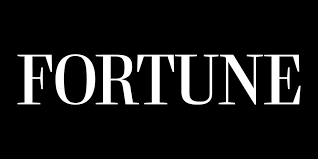
Rolls-Royce CEO fired managers and held staff brainstorms as part of a ‘4 pillar’ turnaround plan that led to 500% share price jump
By Ryan Hogg | Fortune | March 25, 2025
Extractive Summary of the Article | Listen
2 key takeaways from the article
- Just two years ago, Tufan Erginbilgiç, then newly installed as CEO of Rolls-Royce, gave a grim warning to the engine maker’s employees, describing the company as a “burning platform” facing its “last chance” at survival. With that considered, Rolls-Royce’s turnaround since—including a 500% share price jump and hitting profit targets two years ahead of schedule—is nothing short of astounding.
- The victorious Erginbilgiç described how he leaned on “four pillars” to encourage wholesale change throughout his organization. These pillars are: Showing staff the extent of the difficulties faced by the company. Tougher stances were to follow – the company laid off 2,500 employees in 2023. At the same time, Erginbilgiç held workshops for 500 employees to allow brainstorming and the implementation of the best ideas. Erginbilgiç’s third pillar required the company to set clear performance targets. The fourth pillar of the turnaround aimed to ensure Rolls-Royce’s targets were attacked with “pace and intensity.” “If you don’t have a strategy that can cascade down to 42,000 people it won’t get delivered,” Erginbilgiç summarized.
(Copyright lies with the publisher)
Topics: Strategy, Business Model, Restructuring, Corporate Governance, Restructuring, Reforms, Rolls-Royce
Click for the extractive summary of the articleJust two years ago, Tufan Erginbilgiç, then newly installed as CEO of Rolls-Royce, gave a grim warning to the engine maker’s employees, describing the company as a “burning platform” facing its “last chance” at survival, as he lamented its track record of destroying value with each of its investments.
With that considered, Rolls-Royce’s turnaround since—including a 500% share price jump and hitting profit targets two years ahead of schedule—is nothing short of astounding.
But Erginbilgiç, a former BP executive who doesn’t regard himself as ruthless, took a fairly rudimentary approach to instill a successful turnaround at a group that has added more than $70 billion to its market value in the last two years.
Rolls-Royce manufactures engines for major plane manufacturers, Airbus and Boeing, on large, dual-aisle aircraft. The group is also a supplier of engines and propulsion systems for combat aircraft and submarines to government defense departments including the Ministry of Defense in the U.K.
Despite that, when Erginbilgiç joined Rolls-Royce, the company was near its floor for market valuation, bogged down by falling air travel during the COVID-19 pandemic and costly contracts with loss-making clients. An industry-wide rebound in travel demand and some astute contract negotiations are among the headline points that explain Rolls-Royce’s turnaround. In the background, though, are the fruits of an ambitious plan involving each of Rolls-Royce’s 42,000 employees.
Rolls-Royce CEO’s 4 pillars
In an interview with the Financial Times, a victorious Erginbilgiç described how he leaned on “four pillars” to encourage wholesale change throughout his organization. The first pillar involved showing staff the extent of the difficulties faced by the company, exemplified by Erginbilgiç’s “burning platform” comments, which both shocked and focused his employees. Tougher stances were to follow. Under Erginbilgiç’s guidance, the company laid off 2,500 employees in 2023, mostly in middle manager positions, the FT reports. At the same time, Erginbilgiç held workshops for 500 employees to allow brainstorming and the implementation of the best ideas. Erginbilgiç’s third pillar required the company to set clear performance targets. The company now has 17 targets, including improving the amount of time its engines were on the wing of a plane, rather than losing money in the repair shop. The fourth pillar of the turnaround aimed to ensure Rolls-Royce’s targets were attacked with “pace and intensity.” “If you don’t have a strategy that can cascade down to 42,000 people it won’t get delivered,” Erginbilgiç summarized to the FT.
show less
10 Strategies To Grow Your Agency’s Book Of Business
By Drew McLellan | Forbes | April 02, 2025
Extractive Summary of the Article | Listen
2 key takeaways from the article
- For agency owners, business development is often synonymous with chasing new clients. The thrill of landing a new account can feel like the ultimate measure of growth. But the agencies that scale successfully know that sustainable growth doesn’t just come from bringing in new business—it also comes from maximizing the value of existing client relationships. If your growth strategy is overly focused on new business at the expense of existing relationships, you may be missing a significant opportunity.
- While there’s no magic formula, there are key tactics that consistently work. Here are 10 strategies to strengthen client relationships, grow your book of business and set your agency up for long-term success. Prioritize Existing Clients Over Cold Prospects. Proactively Combat Client Attrition. Turn Account Executives Into Business Builders. Implement A Strategic Growth Framework. Create Space For Strategic Thinking. Make Strategic Thinking Part Of Your Culture. Leverage The Outsider Advantage. Stay Connected To Former Clients. Give Account Executives Access To Critical Business Data. And Engage With Executive Leadership.
(Copyright lies with the publisher)
Topics: Strategy, Leadership, Business Model, Team, Agency Performance, Exisiting Clients, New Clients
Click for the extractive summary of the articleFor agency owners, business development is often synonymous with chasing new clients. The thrill of landing a new account can feel like the ultimate measure of growth. But the agencies that scale successfully know that sustainable growth doesn’t just come from bringing in new business—it also comes from maximizing the value of existing client relationships. If your growth strategy is overly focused on new business at the expense of existing relationships, you may be missing a significant opportunity.
While there’s no magic formula, there are key tactics that consistently work. Here are 10 strategies to strengthen client relationships, grow your book of business and set your agency up for long-term success.
- Prioritize Existing Clients Over Cold Prospects. It’s tempting to invest most of your energy into new business, but the reality is that your highest revenue potential lies in your current client base. You’ve already built trust—now it’s about deepening that relationship. See whether you can find ways to expand existing accounts with additional services. Set a goal to generate at least 60% to 70% of new revenue from existing clients. Conduct regular business reviews with clients to discuss evolving needs and uncover new opportunities.
- Proactively Combat Client Attrition. Even the best agencies experience attrition. But while some churn is unavoidable, much of it can be prevented with proactive client management. With this in mind, keep a pulse on client satisfaction—don’t wait for problems to surface. Conduct regular, structured client check-ins at multiple levels of the organization. Consider how you can provide unexpected value through insights, recommendations and strategic thinking.
- Turn Account Executives Into Business Builders. Your account executives (AEs) are on the front lines of client relationships, but are they equipped to think like business owners? Agencies that invest in their account executives’ strategic skills improve the potential for annual book-of-business growth. Train your AEs on agency finances, profit margins and client performance tracking. Set clear expectations for growth goals and measure their impact. Encourage them to think beyond day-to-day tasks and become trusted advisors to clients.
- Implement A Strategic Growth Framework. Successful agencies don’t leave growth to chance—they follow a structured approach. Encourage your AEs to: Conduct client assessments to identify new opportunities. Set SMART goals. And implement targeted tactics and track their effectiveness.
- Create Space For Strategic Thinking. One of the biggest obstacles to growth isn’t lack of opportunity—it’s lack of time. AEs are often so buried in execution that they don’t have time to think strategically. The solution is to carve out dedicated time for AEs to explore clients’ industries, market shifts and competitive challenges. Then, encourage them to proactively bring the strategic insights they gain to client conversations.
- Make Strategic Thinking Part Of Your Culture. It’s not enough for just a few people to think strategically—you have to embed it in your agency’s culture. You can do this by: Recognizing and rewarding strategic thinking within your team. Providing ongoing training in business strategy, industry trends and client-specific challenges and fostering an environment where you encourage AEs to push beyond tactical execution.
- Leverage The Outsider Advantage. Clients can sometimes be too close to their own business to see new opportunities. As an agency, you have the unique ability to bring fresh perspectives. Encourage your AEs to approach client relationships with curiosity and ask the tough questions. Challenge assumptions and bring outside-the-box ideas to the table. Just make sure you align your recommendations with the goals of C-suite decision makers.
- Stay Connected To Former Clients. Former clients aren’t lost revenue—they’re future opportunities. Staying in touch can lead to referrals, reengagements and industry insights. Here are some ways to do this: Build an alumni network of past clients and keep communication lines open. Offer value through exclusive insights, events or thought leadership. And recognize that people change jobs—today’s former client could be tomorrow’s decision maker at a new company.
- Give Account Executives Access To Critical Business Data. Without visibility into agency financials, profitability and client performance, AEs can’t make informed decisions. Transparency helps them think like business owners, not just account managers. Provide your AEs with real-time client performance data, and train them to understand how agency finances impact business decisions. Use reporting tools to track client growth opportunities proactively.
- Engage With Executive Leadership. C-suite relationships matter. Get actively involved in key client relationships to reinforce strategic value and build long-term partnerships. Schedule regular check-ins with clients’ executive teams. Your agency leadership should be visible and involved. The goal is to position your agency as an indispensable partner in solving business challenges.
Personal Development, Leading & Managing
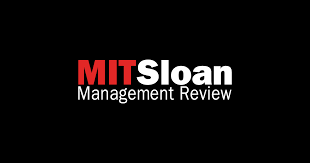
Eight Ways to End Meeting Misery
By William Reed | MIT Sloan Management Review | March 19, 2025
Extractive Summary of the Article | Listen
2 key takeaways from the article
- Meetings should be where work happens, not where productivity goes to die. Yet, too often, they drain people’s energy instead of driving results. If your organization’s meetings are plagued by not-so-subtle multitasking, vague agendas, or the same three people doing all of the talking, you have plenty of company. Ineffective meetings are a major frustration for leaders and employees alike. Making small, intentional changes can transform meetings from tedious obligations into high-impact conversations — but most leaders don’t know how to get there.
- Novel answers, based on research and real-world lessons, can reshape how your team runs meetings. Eight essential insights from MIT SMR’s expert contributors are: Call B.S. on multitasking. Choreograph the meeting — don’t wing it. Assign a critical reviewer. Recognize the realities of virtual meeting side chats. Confront the elephant in the room. Ask questions that make people speak up. Make debate feel encouraged. And implement meeting-free days.
(Copyright lies with the publisher)
Topics: Decision-making, Meetings, Leadership, Leadership Skills, Teams, Cutlure, Workplace, Collaboration
Click for the extractive summary of the articleMeetings should be where work happens, not where productivity goes to die. Yet, too often, they drain people’s energy instead of driving results. If your organization’s meetings are plagued by not-so-subtle multitasking, vague agendas, or the same three people doing all of the talking, you have plenty of company. Ineffective meetings are a major frustration for leaders and employees alike. Making small, intentional changes can transform meetings from tedious obligations into high-impact conversations — but most leaders don’t know how to get there.
Novel answers, based on research and real-world lessons, can reshape how your team runs meetings. Eight essential insights from MIT SMR’s expert contributors are:
- Call B.S. on multitasking. “How do we get to a tech-free environment in meetings where people’s full attention is crucial? Announce clear expectations and expect pushback.” “Start with a statement that devices are to be turned completely off. Alternatively, allow technology, but only for very clearly stated purposes, like note-taking or looking at something when instructed to. And be prepared to call people out. (Let’s be real: There is a lot of lying about ‘only using it for note-taking.’)”
- Choreograph the meeting — don’t wing it. “Choreographers carefully consider the number of dancers on the stage, the sequence of movements, and the set. Just as dance integrates these elements, so, too, does meeting choreography: A leader can shape the conversational space before, during, and after a discussion, thereby influencing the acceptance of key decisions, the performance of critical personnel, and team spirit.” To enhance meeting choreography, leaders should focus attention on why, who, what, when, where and how.
- Assign a critical reviewer. “Introducing a critical reviewer changes the entire dynamic of a meeting: Teams become more deliberate, and discussions go deeper. The critical reviewer’s primary responsibility is to challenge assumptions, ask probing questions, and ensure that every angle is explored before a decision is made. This role not only fosters better outcomes but also creates an environment in which people feel encouraged to think critically and contribute meaningfully.”
- Recognize the realities of virtual meeting side chats. The existence of dissenting voices themselves isn’t a problem. Rather, it’s problematic when widely held below-the-surface dissent builds up and is never expressed publicly to leadership or to those beyond a certain side-chat group.”
- Confront the elephant in the room. “When people avoid discussing difficult topics in meetings — perhaps out of fear of conflict or discomfort with the power dynamics — tensions will rise. “For leaders, addressing the emotional impact this behavior is having on the meeting without blaming others is important. The leader can voice their own frustration to dissipate the tension and open a conversation. This can also deepen the connections within the team. To get the job done, you might need to incorporate a conversational device or even a physical prop.”
- Ask questions that make people speak up. “One of the most common missteps leaders make is asking broad, nonspecific questions like ‘What do you think?’ or ‘Does anyone have any input?’ While these questions might seem open and inviting, research found that they had just a 51% chance of receiving any dissent. “More effective questions directly invite disagreement. Instead of asking, ‘Does anyone agree with this plan?’ consider asking, ‘What could go wrong with this approach?’ or, ‘What are the potential risks we haven’t considered?’ Questions like these make clear that the leader is actively seeking alternative and potentially challenging perspectives. This subtle shift frames disagreement as something the leader desires — and people are wired to give leaders what they want.
- Make debate feel encouraged. “As CEO of Red Hat, [Jim] Whitehurst thought of himself as the company’s head debater: He was engaging in candid discussions on important topics and making sure others did the same. He recalled that IBM was different: ‘I’d walk in a meeting at IBM … and everybody tried to say, “OK, what kind of mood is he in?” And then it’s like they wanted to structure things around what I wanted to hear.’” “To counterbalance employees’ desire to agree with the boss, Whitehurst would sometimes argue the opposite side of what he believed. Once team members realized that he was using that tactic, they felt more comfortable sharing their candid opinions.
- Implement meeting-free days. “While it may seem counterintuitive, our research concluded that having too many meetings detracts from effective collaboration, derails workers during their most productive hours, and interrupts people’s train of thought. Consequently, removing 60% of meetings — the equivalent of three days per week — increased cooperation by 55%. Workers replaced meetings with better ways of connecting one-on-one, at a pace suitable for them, often using project management tools to aid communication. In doing so, the risk of stress decreased by 57%, which improved employees’ psychological, physical, and mental well-being.”
Entrepreneurship Section

How Sean Devlin Grew Nice News to a Million Subscribers in 3 Years
By Steve Strauss | Inc | March 25, 2025
Extractive Summary of the Article | Listen
3 key takeaways from the article
- Nice News newsletter has grown to a million subscribers in three years. It is quite remarkable for many reasons. The biggest reason being that so-called positive news is an area that traditionally does not do well.
- How did founder and GM Sean Devlin buck the trend and make Nice News a thing? When the author asked Sean for his take as to why Nice News seems to have struck a chord, he pointed to a few things: There was pent up demand for what he was offering—people like getting positive news in their inbox every morning; the content is unique; and the design is easy on the eyes. Further to these Sean’s a lean team of devoted writers and collaborating with other newsletter and companies were also key.
- In the end, rapid growth like this is due to a variety of factors, but maybe one stands out. The Nice News mission is to “facilitate our readers’ to filter the world through a more positive lens.” And that’s something we all seem to need these days.
(Copyright lies with the publisher)
Topics: Entrepreneur, Startup, Content Marketing, Newsletter, Nice News, Subscribers
Click for the extractive summary of the articleNice News newsletter has grown to a million subscribers in three years. It is quite remarkable for many reasons. The biggest reason being that so-called positive news is an area that traditionally does not do well. So how did founder and GM Sean Devlin buck the trend and make Nice News a thing?
Positivity drives impact. During Covid, watching the news was a chore. Doomscrolling was what everyone did. So much so that Devlin decided that he needed a news break. When he came back from that self-imposed news blackout, what he realized was there was a need for more positive news—nice news, if you will.
But the thing is, as indicated, positive news usually doesn’t fare well. Ninety percent of news is negative for a reason. It gets ratings and readership. As the old saying in the news business goes, “If it bleeds, it leads.” It is a maxim for a reason.
Devlin used his journalism background as an asset. Previously, he helped to create, run, and grow other newsletters at Optimism, an inbox-first media company that serves inspiring content to millions of readers every day. His previous work taught him that research was the answer.
Before launching, like any good entrepreuer, Devlin made sure that his thesis about the need for nice news was accurate. Was there a market for a nice newsletter? What format would likely work best? Who would read it?
Devlin concluded there indeed was a market need and with the backing of Optimism, launched the daily Nice News newsletter in 2022.
Why positive news is gaining traction. Was he right? The stats don’t lie. A million subscribers in three years is crazy good. Why the rapid growth? For starters, Nice News is a delight. A curated digest of all sorts of stories with a positive spin, it is engaging, easy to read, fun, unexpected, and interesting.
Teamwork is crucial to success. While content is king at Nice News, being savvy is not far behind; another reason why Devlin has been so successful at growing Nice News is that he doesn’t go it alone. He has a lean team of devoted writers. Similarly, collaborating with other newsletter and companies is also key.
Optimism’s parent company, Pardon, has been an investor, which gives Devlin the funding needed to kick things up a notch. Nice News also engages in swaps, giveaways, and other tricks of the trade with other newsletters.
The point is, great entrepreneurs like Devlin know they can’t go it alone. Having partners, co-venturers, and teammates fills out the team and the whole becomes greater than the sum of the parts.
When the author asked Sean for his take as to why Nice News seems to have struck a chord, he pointed to a few things: There was pent up demand for what he was offering—people like getting positive news in their inbox every morning; the content is unique; and the design is easy on the eyes.
In the end, rapid growth like this is due to a variety of factors, but maybe one stands out. The Nice News mission is to “facilitate our readers’ to filter the world through a more positive lens.” And that’s something we all seem to need these days.
show less
7 Lessons Entrepreneurs Can Learn From Special Operations Training
By Roy Dekel | Entrepreneur | Edited by Chelsea Brown | March 21, 2025
Extractive Summary of the Article | Listen
3 key takeaways from the article
- Some of the best business lessons don’t come from the boardroom — they come from experiences that push you to the edge. According to the author his journey began in Shayetet 13, Israel’s elite naval commando unit, often regarded as the Israeli counterpart to the U.S. Navy SEALs. This unit regularly trains and operates alongside SEAL teams, honing skills in high-stakes, high-pressure environments.
- The transition from military service to business wasn’t seamless, but the same principles that shaped him as a soldier have defined his career in PropTech, FinTech and insurance technologies — and now, as a venture investor.
- Key lessons he has carried with him from special operations to entrepreneurship are: Embrace controlled chaos. Small wins lead to big victories. Decision-making under pressure defines success. The right team is everything. Discomfort is the ultimate teacher. Quitting never feels good. And it pays to be a winner.
(Copyright lies with the publisher)
Topics: Startups, Entrepreneur, Resilience, Failure
Click for the extractive summary of the articleSome of the best business lessons don’t come from the boardroom — they come from experiences that push you to the edge. According to the author his journey began in Shayetet 13, Israel’s elite naval commando unit, often regarded as the Israeli counterpart to the U.S. Navy SEALs. This unit regularly trains and operates alongside SEAL teams, honing skills in high-stakes, high-pressure environments. The transition from military service to business wasn’t seamless, but the same principles that shaped him as a soldier have defined his career in PropTech, FinTech and insurance technologies — and now, as a venture investor. Key lessons he has carried with him from special operations to entrepreneurship are:
- Embrace controlled chaos. In special operations training, chaos is the baseline. The moment you think you have control, something shifts. The same applies to entrepreneurship. Markets fluctuate, competitors pivot, and funding disappears overnight. The best business leaders don’t just react to chaos — they anticipate it and use it to their advantage. Lesson: Embrace uncertainty as an opportunity rather than a threat. By consistently training yourself to navigate unpredictable conditions, you develop the resilience needed to adapt and grow. The stronger your ability to handle the unexpected, the more unshakable your business will become.
- Small wins lead to big victories. In training, trainees didn’t start by jumping out of planes or executing complex missions. They focused on the fundamentals — perfecting each movement, building endurance and developing trust. In business, it’s easy to get obsessed with massive growth and overnight success, but sustainable success comes from stacking small wins every day. Lesson: Focus on mastering the basics, from financial discipline to hiring the right people and refining your product. Small, consistent improvements may seem minor, but they accumulate over time. These incremental gains ultimately lead to massive breakthroughs and long-term success.
- Decision-making under pressure defines success. In special operations, hesitation can cost lives. In business, hesitation can cost millions. Entrepreneurs who succeed aren’t necessarily the smartest or the most experienced — they’re the ones who can make calculated decisions under pressure. Lesson: Train yourself to make tough decisions even when information is incomplete. In uncertain situations, rely on your preparation and assess the best available insights. Confidence and decisive action will keep you moving forward.
- The right team is everything. No special operator succeeds alone — success in high-stakes environments depends on the team. The same is true in business, where the right people can make or break your company. Surround yourself with those who share your mission, perform under pressure and push beyond their limits. A strong team isn’t just an asset; it’s the foundation of lasting success. Lesson: Don’t hire solely for skills — prioritize mindset. Seek individuals who excel under pressure, take ownership of challenges and adapt quickly to change. The right mindset can often outperform expertise in the long run.
- Discomfort is the ultimate teacher. One of the first lessons in special operations training is that discomfort is inevitable. Cold water, exhaustion and relentless stress are all part of the process. The same holds true in business — challenges are unavoidable. The most successful entrepreneurs don’t shy away from discomfort; they embrace it as a catalyst for growth. Lesson: Growth happens when you push beyond your comfort zone. Whether launching a new product, entering a new market or making a tough pivot, progress comes from taking risks. Embrace discomfort as a signal that you’re moving in the right direction.
- Quitting never feels good. Quitting is rarely about failure — it’s often the impulsive decision to stop adjusting, scaling, adapting and driving toward the mission you set on day one. There’s a difference between making a strategic exit and quitting. Writing off a failed initiative or exiting a business at the right time is part of the game. But walking away simply because it’s hard? That’s not an option. Lesson: True resilience means pivoting, not giving up. When obstacles arise, stay committed to your mission and adapt your approach. There’s always another way forward.
- It pays to be a winner. This phrase is well known in the American SEAL teams and was part of our own motto as well. You won’t always win, but relentless effort and unwavering determination set you apart. If you stay committed, push past obstacles and refuse to quit, the value of that perseverance is immeasurable. Lesson: Winning isn’t just about the outcome — it’s a mindset. The most successful people don’t rely on luck; they prepare relentlessly, adapt strategically and fight with determination. In the end, the pursuit of victory is priceless.

Leave a Reply
You must be logged in to post a comment.